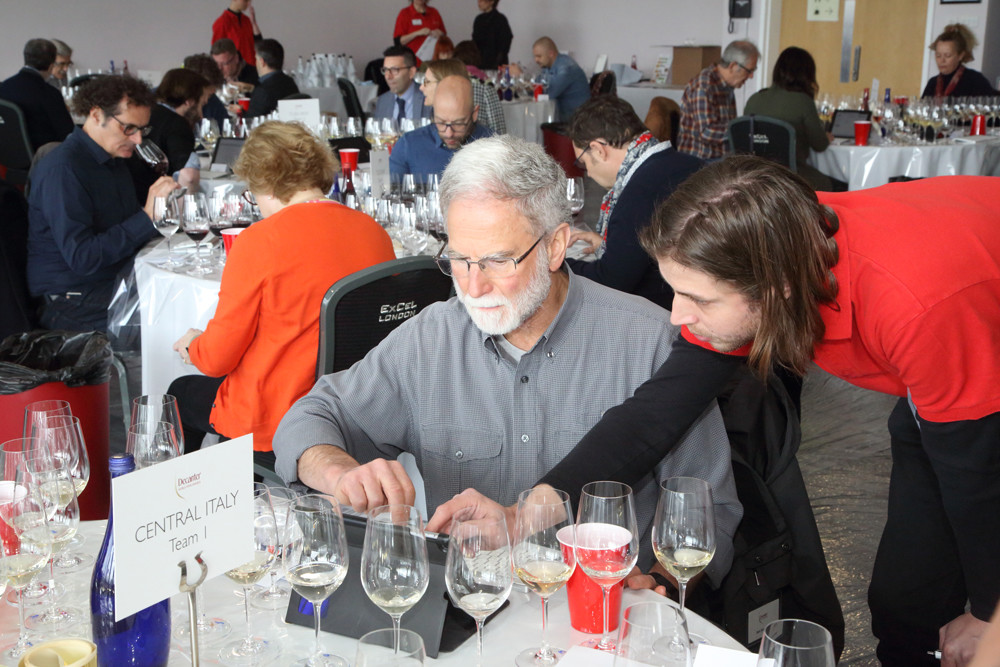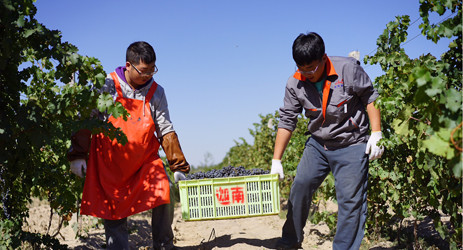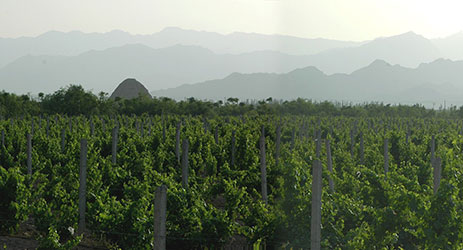As one of the rising fine wine regions in China, Ningxia is attracting more and more domestic and international investors and winemakers. Jade Vineyard, which recently completed its brand-new chateau, is one of the bold new challengers...

Emma Ding: From importer to estate owner
The Jade Vineyard is located in the Jinshan area of Helan Mountain East, Ningxia. The 21ha estate includes 15ha of vineyard, producing 70,000 to 80,000 bottles of wine each year.
The owner of the estate, Emma Ding, is originally from Tianjin in northeast China, near Beijing. She graduated with an MS in Economics from Nankai Institute of Economics, pursuing a career in banking before she decided to quit in 2005 to seek something that she could be passionate about.
In 2007, Ding’s French tutor brought her an article about the wine import business, which inspired her interest in wine. Within a year, she launched her first wine retail store, Cave d'Emma, establishing a relationship with domestic importers including ASC Fine Wines, Aussino and Jointek. By 2009, the business had expanded to include two retail stores and a wine club.

However, Ding felt that she would prefer to get involved in the production side of wine. ‘I can’t see a future that excites me in trading and sales,’ she said.
By the end of 2012, when Ningxia has begun to attract international attention as the country’s key fine wine region, Ding had decided to establish a wine estate of her own there.
The terroir of Helan Mountain East

‘When I was choosing wines to import for my business, I visited many cru classes in France. Slowly I came to understand the criteria of a good vineyard.’
She set her eyes on virgin land 1,180-1,220 metres above sea level, with scenic views of the rolling Helan Mountain to the west, and patches of vineyards and wineries to the east.
Starting in 2013, Ding and her team spent three years preparing the vineyard sites. Situated within the alluvial fan of Helan Mountain, they feature complex soils of sand, lime, marl, chalk and gravel.
Large rockfalls brought additional headaches and costs, however: those that were cleared in the first year seemed to reappear in the second year, recalls Ding. Her team had to sieve through the 21ha of land, piling up a hill of rocks.
Helan Mountain East has an arid/semi-arid climate with diurnal temperature variation of 12-15°C. During the growing season, the region enjoys 1700 – 2000 hours of sunshine and an effective accumulated temperature of 3,400-3,800°Cd per year. There are only 160-180 frost-free days every year, and winter temperatures constantly drop below -15°C; therefore, growers need to bury their vines under earth to endure the winter, which requires extra work and additional costs.
The region’s annual precipitation is just 200mm, whereas evaporation is 580mm. In order to fill the gap, Jade Vineyard installed an Israeli drip-irrigation system.
Choosing the variety

Classic Bordeaux varieties, namely Cabernet Sauvignon, Merlot, Cabernet Franc and Petit Verdot, plus 10% Marselan and 10% Chardonnay, were the main varieties planted in Ding’s vineyards.
Several critics, domestic and international, have expressed their doubts about China’s obsession with Cabernet Sauvignon, however Ding insisted on planting the variety. She refused to plant a larger percentage of Marselan, even though this crossing of Cabernet and Grenache is increasingly expected to become the future ‘signature grape’ of China.
‘Why is Cabernet widely planted in China? Because it’s comparatively easy to plant and it’s widely welcomed by consumers. We shouldn’t abandon it simply because it’s popular,’ said Ding.
‘Cabernet can ripen nicely in Ningxia, which is not easy. Marselan for China, on the other hand, is more similar to Zinfandel for Napa Valley, but arguably most of the top wines from Napa are not made from Zinfandel.’
The winery imported disease-free vines from a French nursery and planted at a density of 3,180 vines/ha, which yields 6,400 kg/ha of grapes. The vines are single-arm spur pruned, and Ding follows organic practices by using farmyard manure as fertiliser and low-toxicity pesticides.
The Ningxia winery is also proud to have an all-Chinese viticultural and winemaking team, led by veteran winemaker Zhou Shuzhen and viticulturist Zhang Guoqing.
The hard work has paid off. Established for only six years, Jade Vineyard has so far won several domestic and international awards, including two gold medals in the Decanter World Wine Awards for its Bordeaux blend, Hyacinth.
2019: A new start

In September 2019, Jade Vineyard celebrated the completion of its chateau in Jinshan. Unlike a traditional Chinese opening ceremony, which always feature drumming and firecrackers, Ding invited cellist Zhu Yibing to present a concert in the vineyard.
During its years of construction, I visited Jade Vineyard twice. But seeing the completed chateau gives me a new understanding about what this producer stands for.
This horizontal, low-rise white building is covered by the rocks found in these lands, humble yet intimate, blending harmoniously into the rolling foothills of the majestic Helan Mountain. The tall watch tower standing in the middle gazes towards the scenic view, and from there you can head down via the spiral staircase to the underground cellar.
Concrete walls inside the winery and cellar are simple but powerful, with enormous glass windows on the west and east sides to introduce sunshine, while providing views to the mountains. A professional concert hall is found on the second floor, where music enthusiast Ding hosts festivals every year.
‘We can taste the terroir and culture in the wines of many famous regions in the world. Can we also make a wine that expresses the taste and beauty of China?’ I think Emma Ding is certainly providing her answer to the question with Jade Vineyard.
The winery is open to the public from October 2019.
Translated by Sylvia Wu / 吴嘉溦
All rights reserved by Future plc. No part of this publication may be reproduced, distributed or transmitted in any form or by any means without the prior written permission of Decanter.
Only Official Media Partners (see About us) of DecanterChina.com may republish part of the content from the site without prior permission under strict Terms & Conditions. Contact china@decanter.com to learn about how to become an Official Media Partner of DecanterChina.com.






Comments
Submit